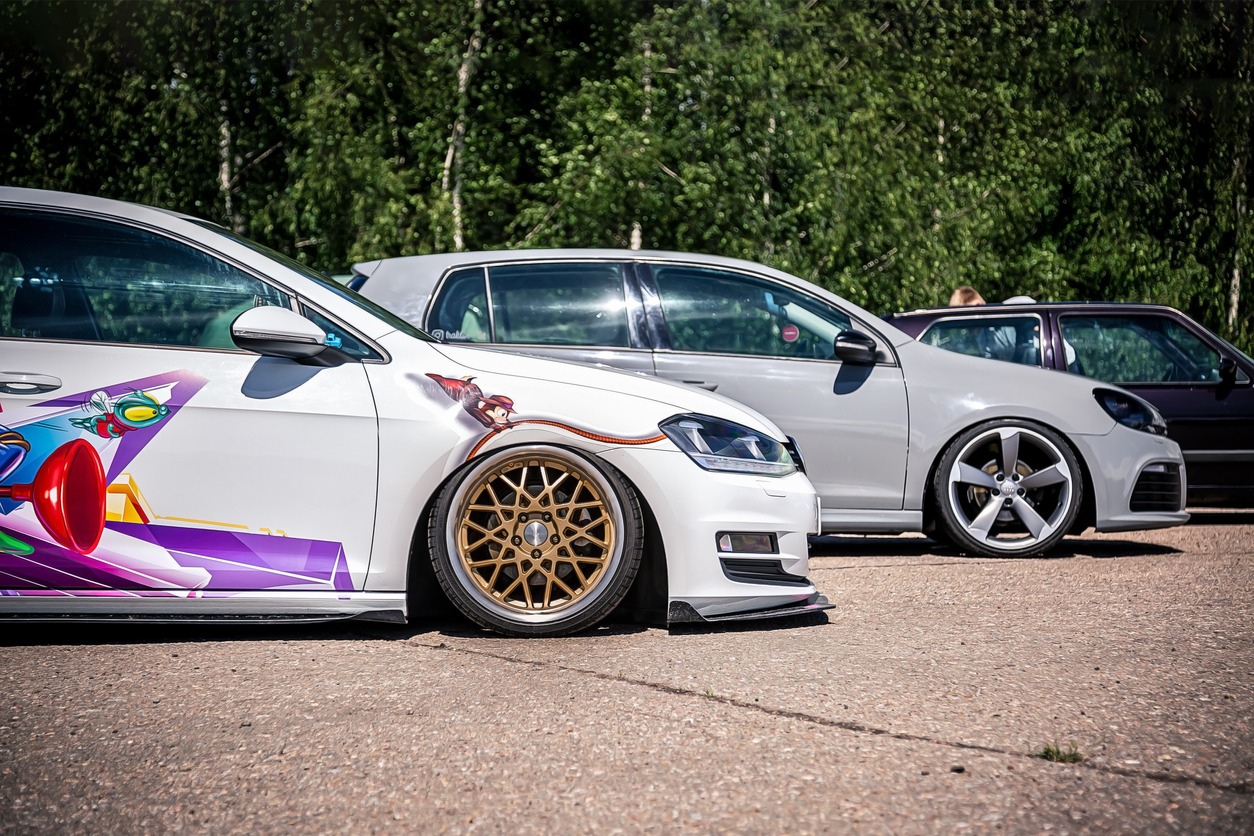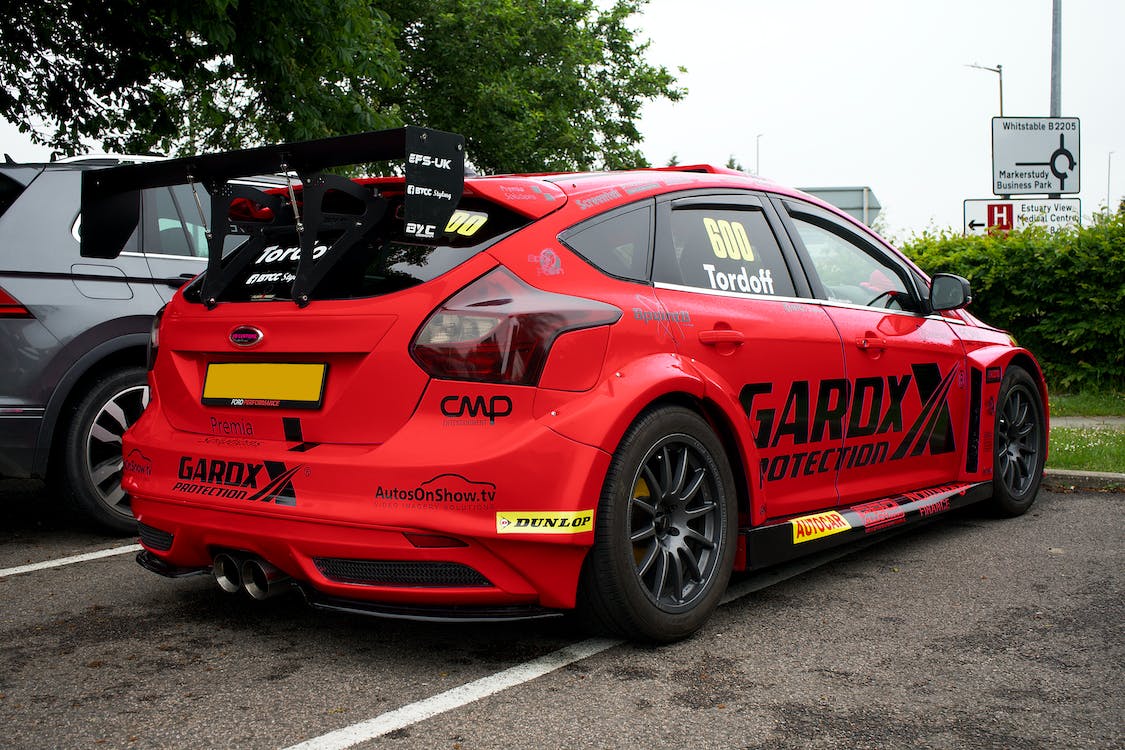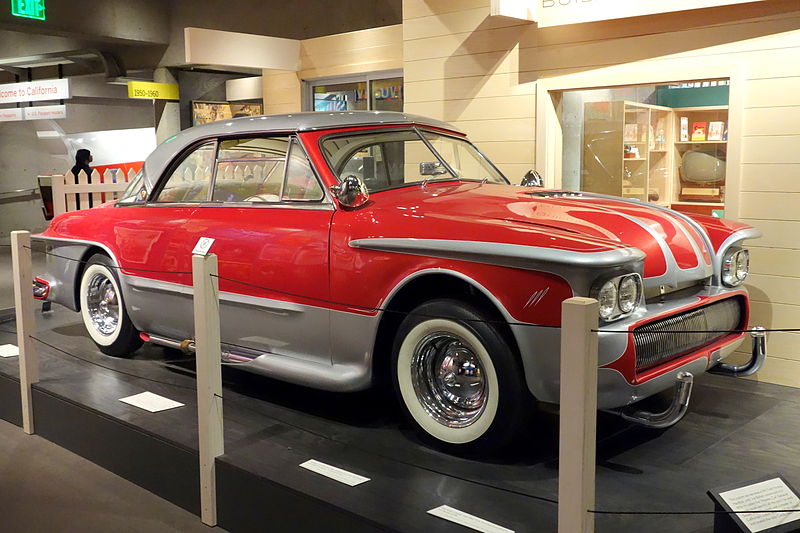Fashion trends aren’t the only things that come and go – car tuning trends do, too. Let’s take a fun journey through the history of car modifications, exploring how we got to the era of widebodies and air suspension, one decade at a time.
From the moment cars hit the roads, people have been keen to tinker with them. Right from the early days, when cars replaced horses, adventurous spirits have been enhancing their rides, always looking for a bit of extra excitement.
The early hot-rodders, fresh from various wars and military service, gathered to pool their knowledge in a quest for speed. Even NASCAR has its roots in the rebels’ love for building ultra-fast cars for smuggling – but it’s not just about battles and illegal hooch. Modifying cars is simply part of who we are. We’re driven to tweak and improve our cars because it’s in our nature. There’s a rich history behind this, and it’s all part of the fun. So, let’s dive into our guide to the history of car modifications.
What is Car Customization?
Car customization is all about personalizing your car beyond its factory settings, mainly to boost its performance. This often involves tweaking or swapping out engines and transmissions.
Just these changes alone can make your car stand out, giving it a one-of-a-kind look that’s different from its original factory model. Custom builders often add their flair and personal touches to cars, tailoring them to someone else’s preferences, too. Plus, many car enthusiasts love to add special features on top, like carbon fiber exterior parts, fresh paint jobs, new decals, fancy accessories, additional lights, and much more. It’s all about making your car uniquely yours.
Early Beginnings

The Dawn of Customization
In the early years of the automotive industry, owning a car was a privilege reserved for the affluent. This exclusivity sparked a desire for distinction, where wealthy car owners sought to personalize their vehicles.
During this time, skilled coachbuilders would take standard automotive chassis and adorn them with custom bodywork. These early modifications were less about performance and more about showcasing craftsmanship and luxury. Notable examples include the custom Rolls-Royces and Duesenbergs, which were as much a status symbol as they were modes of transportation.
Pioneers in Modification
Key figures began to emerge during this era, laying the foundation for car customization. In the United States, individuals like Harley Earl, who later became a prominent automotive designer for General Motors, started experimenting with car designs in the 1920s. Earl’s custom Cadillac, known as the “Phantom,” displayed features that were ahead of its time, including integrated fenders and a streamlined shape, influencing future car designs.
The Emergence of Hot Rodding
The term “hot rod” traces its roots back to the late 1930s in Southern California. Young enthusiasts began modifying affordable, pre-war cars, mainly Fords, due to their simple design and the availability of spare parts. The aim was straightforward: strip the car of any unnecessary weight and enhance the engine to achieve higher speeds. The dry lake beds of California, such as El Mirage and Muroc, became popular spots for these hot rodders to test their creations, laying the groundwork for organized drag racing.
The dry lakes of Southern California played a crucial role in the evolution of hot rodding. These vast, flat expanses were ideal for high-speed runs, and they attracted car enthusiasts from across the region. Here, the spirit of competition and innovation thrived as individuals pushed the limits of their modified vehicles. It was not just about speed; craftsmanship, mechanical skill, and ingenuity were equally celebrated.
The Role of Bootlegging
Another significant influence on early car modifications was the practice of bootlegging during Prohibition in the United States. Bootleggers needed fast, agile cars to transport illegal alcohol while evading law enforcement. This required modifications like enhanced engines, improved suspension, and inconspicuous appearance – which inadvertently contributed to the hot rodding culture.
The Impact of Great Depression
The Great Depression had a paradoxical effect on car modification. On one hand, economic hardships made it difficult for many to afford new cars. On the other hand, this led to a surge in creativity as car owners sought to maintain and enhance their existing vehicles rather than purchase new ones. This period saw an increase in self-taught mechanics and home-garage tinkerers, who laid the groundwork for the do-it-yourself (DIY) ethos that is still a hallmark of car modification culture today.
Post-War Boom: 1940s – 1960s
After the war, hot rod culture experienced an explosive growth. This period is often referred to as the Golden Age of Hot Rodding. Soldiers, utilizing the technical skills they had honed during the war, began to modify cars for speed and performance in earnest. The availability of surplus war machinery, such as aircraft parts, further fueled this trend, leading to innovative uses in car modifications.
The Rise of Drag Racing
The 1950s saw the formalization of drag racing, evolving from informal street racing to organized events. The National Hot Rod Association (NHRA) was founded in 1951 by Wally Parks with the goal of providing a safe and structured environment for drag racing. This period also witnessed the construction of dedicated drag strips across the United States. Drag racing quickly became a popular sport, attracting both participants and spectators in large numbers, and it played a crucial role in pushing the limits of automotive performance.
Custom Cars and the Influence of Cinema
Custom cars, distinct from hot rods, gained immense popularity in the 1950s. These cars were more about aesthetics and less about speed. Customizers like George Barris, who would later gain fame for creating the Batmobile, and Ed “Big Daddy” Roth, known for his outlandish designs, became celebrities in their own right. This era also saw the influence of Hollywood and television, with custom cars featuring in movies and TV shows, further popularizing the culture.
The Kustom Kulture
The custom car scene, often referred to as “Kustom Kulture,” was characterized by modifications like chopping (lowering the roofline), channeling (lowering the body), and sectioning (removing a horizontal section of the body to reduce height). Custom paint jobs, including metal flake paint, pinstriping, and later candy colors, became trademarks of this era. This movement was not just about cars; it influenced fashion, music, and art, becoming a distinct subculture.
Trends in Car Modification

1960s
In the 1960s, the Mini was a game-changer for car modifying. This little car wasn’t just groundbreaking for its design (like its transverse engine, affordability, and efficiency), but it also became a favorite for tuning enthusiasts. Straight from the factory, the Minis were lively, evidenced by the countless race and rally wins of the Coopers. However, it was the Mini’s simple mechanics that really inspired people to dismantle their cars and rebuild them into something more exciting and race-ready.
But there was another big push for car modifying in the ’60s: racing. In the UK, especially in Touring Car (or back then, Saloon Car) racing, there was a strong belief in the “Win on Sunday, sell on Monday” philosophy. The race cars people watched on TV were like jazzed-up versions of their own cars. And that’s what they replicated. Lowering the suspension, widening the tires, adding a powerful camshaft, and upgrading the carburetors transformed everyday cars into street racers. Best of all, these modifications could be done right in your garage without the headache of complex ECUs or CAN bus systems. The 1960s truly were a golden era for DIY car tuning.
1970s
The 1970s were all about going big in car modification. Despite the oil crisis, people were eager to push the limits. It was the era where you’d see cars with shagpile carpets, porthole windows, and flashy metal flake paints in bold dodgem patterns. Cars, ranging from the Morris Minor to the Bedford CF, the Mk1 Escort to the MGB, were often modified with jacked-up rear ends to show off Jaguar differentials and independent rear suspensions.
Custom vans also made a grand entry, and the American influence was unmistakable with huge V8 engines, often Rover V8s (which are pretty much Buick engines), fitted into all sorts of vehicles. Airbrushing was hugely popular, with cars frequently featuring elaborate murals, like a warrior woman with a dragon.
The ’70s also saw the emergence of the “South London look.” This style was mainly about hot Ford Escorts or Cortinas equipped with Harris-tuned engines, sitting low on 13-inch wheels, painted in soft pastel shades, and featuring a smooth, bumper-less, un-arched appearance. This look has made a comeback and is hugely popular today, drawing many similarities with the modern Euro-look in car styling.
1980s
The 1980s were all about the hot hatchback. These cars, like the Golf GTI, Astra GTE, and 205 GTI, brought exciting performance to the everyday driver. It wasn’t just about the zip; turbocharged models like the 5 GT Turbo, Escort RS Turbo, and Uno Turbo were also gaining fans for their thrilling turbo whistles.
And what was the 1980s’ go-to for car mods? Plastic, of course! This was the decade that embraced plastic more than any other. Window louvres were all the rage, but the real craze was in bodykits. Companies like RGM were big names, creating spoilers, skirts, and bumper extensions for all sorts of cars. It was the height of cool to have your car decked out in plastic additions, especially if they were color-coded. Matching the wheels’ color to the body? Even better.
1990s
In the 1990s, the passion for body kits really hit its stride. The Ferrari Testarossa 512TR (1991-1994), with its iconic sidestrakes, was a huge inspiration. Companies like Rieger Tuning led the way, creating outlandish widebody kits for cars like the E30 BMW, Ford Escorts, VW Corrados, and more. Everyone wanted to go wider – from Skeete’s broad GT Turbos to Dimma’s desire to widen everything in sight.
As the decade progressed, car modifications became even more adventurous. We moved from popular wheels like the TSW Venom and Smiths Twister to more daring designs. People were swapping in headlights from different cars, smoothing out their bodywork, adding bad-boy bonnets, loads of mesh, wing vents from Mercedes vans, and the biggest wheels they could find. There was also a big influence from France, with a trend to transform ordinary hatchbacks into something completely unrecognizable.
At the rear, the Peco Big Bore 4 exhausts gave way to even larger quad 5-inch tails – the bigger, the better. The ’90s were also all about wild stereo systems. Think double-DIN Mini-Disc players paired with elaborate fiberglass enclosures housing multiple subwoofers, illuminated amplifiers, and artistic components. Doors packed with speakers completed the setup – it was a time when bass ruled.
2000s
The 2000s car modifying scene was hugely influenced by one cultural phenomenon: “The Fast and the Furious.” Released in 2001, this movie quickly became a favorite among car enthusiasts, despite some of its more over-the-top elements. It was all about the cars – Skylines, S2000s, RX-7s, and anything else with a Japanese badge became the must-haves.
This led to a wave of cars decked out in full-length Manga graphics – and not just on expected models, but on cars like Vectras and Mondeos, too. Bright orange paint jobs, massive aluminum spoilers, and neon underglow became the norm. Everyone wanted to channel their inner Dom Toretto or Brian O’Conner. The 2000s took the excess of the 1990s and added a Hollywood twist, creating a vibrant and unforgettable era in car modifying.
2010s & 2020s
Curious about car tuning in the 2010s and early 2020s? Not much has changed even now, and the scene can broadly be divided into three main camps:
First, there’s the stance scene. This group is all about precision in how a car sits, whether that’s through air ride, coilovers, or hydraulics. There’s a competitive edge to having the rarest wheels and the most extreme fitment, with frequent changes to stay ahead. And a luxurious interior? That’s a given.
The second group takes a leaf out of the Belgian book – the OEM+ approach. Here, it’s all about cleanliness, period-correct modifications, and retro values. The aim is to make the car look ‘better-than-new.’
The third group is obsessed with raw power. Thanks to technological advancements and a growing aftermarket, turning a regular hatchback or family car into a machine that rivals supercars for power has become much easier.
Of course, these are just three of the many styles out there. You’ve got everything from VIP, rat-look, bosozoku, murdered-out, supercamber, donks, zokusha, widebodies to grid-look – the list goes on. The car modification scene is as diverse and vibrant as ever.

